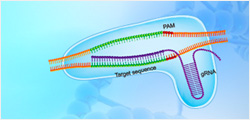EpCAM/TROP1, Rhesus macaque
Epithelial Cellular Adhesion Molecule (EpCAM), also known as KS1/4, gp40, GA733-2, 17-1A, and TROP‑1, is a 40 kDa transmembrane glycoprotein that consists of a 242 amino acid (aa) extracellular domain with two EGF‑like repeats, a 23 aa transmembrane segment, and a 26 aa cytoplasmic domain.
| ¥3300 | |
| Z04949-100 | |
|
|
|
|
|
|
|
|
|



































